The Life of Katsushika Hokusai
A few prints from "Thirty-six Views of Mount Fuji".
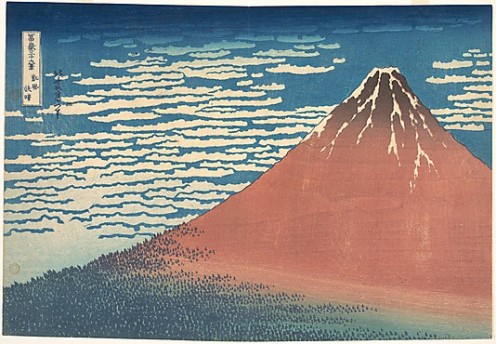
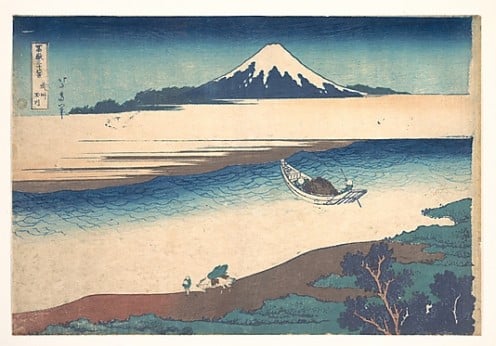
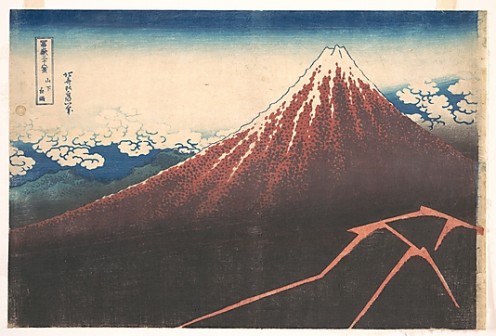
Katsushika Hokusai
Katsushika Hokusai lived a life steeped in the arts. Born to an artisan family in 1760, he began painting at the age of 6, and became an apprentice woodcarver at age 14. Four years later, he was accepted into the studio of a ukiyo-e artist, Katsukawa Shunshō, where he worked for a decade and learned the art of ukiyo-e. During this time, Hokusai used courtesans and Kabuki actors as his subjects. His first series of prints, published in 1779, featured Kabuki actors. The works for which he is best known, however, focus on landscapes and images of daily life. The most well known of his landscape pieces is a series of prints published between 1826 and 1833: "Thirty-six Views of Mount Fuji".
Katsushika Hokusai devoted his life to his art. He wrote this postscript to his work "One Hundred Views of Mount Fuji" in 1834 at the age of 74: "From around the age of six, I had the habit of sketching from life. I became an artist, and from fifty on began producing works that won some reputation, but nothing I did before the age of seventy was worthy of attention. At seventy-three, I began to grasp the structures of birds and beasts, insects and fish, and of the way plants grow. If I go on trying, I will surely understand them still better by the time I am eighty-six, so that by ninety I will have penetrated to their essential nature. At one hundred, I may well have a positively divine understanding of them, while at one hundred and thirty, forty, or more I will have reached the stage where every dot and every stroke I paint will be alive. May Heaven, that grants long life, give me the chance to prove that this is no lie. ” (2)
Great Wave Off Kamigawa
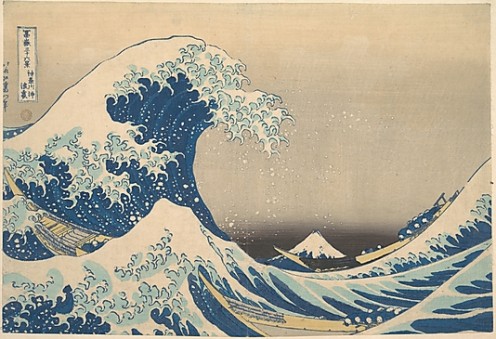
Ukiyo-e
The art of ukiyo-e was born in Edo, Japan in the 17th century. (3) "The word Ukiyo-e was originally Buddhist and meant "sad world". By the seventeenth century, however, the meaning evolved to mean, "floating world." The world referred to be one of transient pleasures and freedom from the cares and concerns of the world. The prints and paintings that the merchants commissioned and bought, almost always depicted aspects of a carefree existence, and were therefore called Ukiyo-e: 'pictures of the floating world'."(1) Images of courtesans, geisha, Kabuki actors, and tea house waitresses were extremely fashionable. Some artists even created erotic art called shunga. Prints of landscapes, flora, and fauna represented in different seasons were also very popular. Copies of the famous print "Wave Off Kanagawa" can still be found today in poster stores at the mall. "Wave Off Kanagawa" was published around 1831 as a part of a series of prints by one of my favorite ukiyo-e artists, Katsushika Hokusai.
The Dream of the Fisherman's Wife
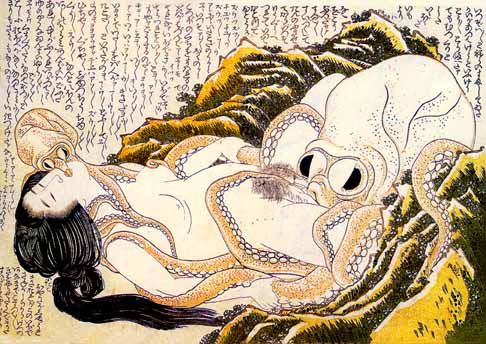
Shunga
He is also known for a renowned shunga print: " The Dream of the Fisherman's Wife". Shunga is a form of Japanese erotic art done in ukiyo-e style. "The Dream of the Fisherman's Wife" portrays a woman being pleasured by octopi. This piece is considered to be the forerunner of modern tentacle erotica, which is popular in Japan because artists are forbidden by pornography laws to display the penis.
Wood Block Printing
Katsushika Hokusai, like many great printers of the era, used traditional wood block printing techniques. Starting with a drawing of whatever he wanted to print, he would trace the image onto a block of hardwood. Traditional ukiyo-e artists used hardwoods, such as cherry, for their printing blocks because even the thinnest piece of wood would hold up to hundreds of printings. After tracing his desires image, Hokusai would carve away pieces of the wood, starting with the portions he wanted white. After printing with one color, he would carve away a little more and print with another color. This process would be repeated until the entire image and all its different colors were printed onto the paper. Wood block printing is a time-consuming process that takes great skill and attention to detail, and Katsushika Hokusai was a master, creating many famous prints under a plethora of different names. However, he did not see himself as a master, and has been quoted as saying on his deathbed "If only Heaven will give me just another ten years... Just another five more years, then I could become a real painter." (2)
Sources
1. http://tokugawagallery.com/history.html
2. http://www.katsushikahokusai.org/biography.html
3. http://www.ukiyo-e.se/
4. http://www.all-art.org/history330-5.html









